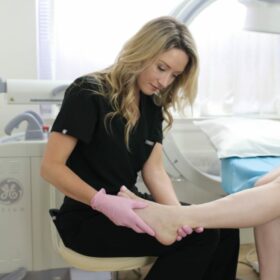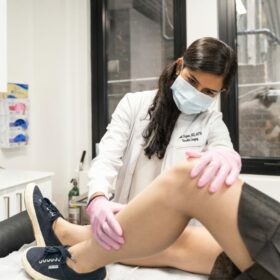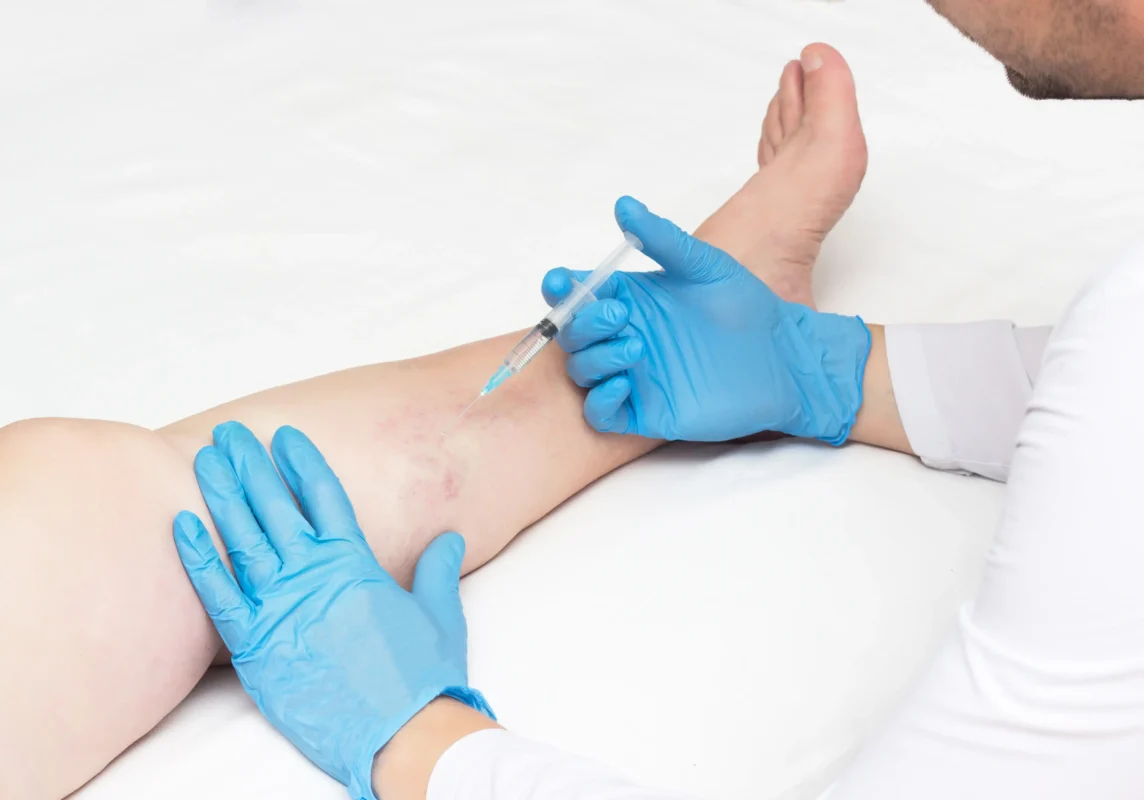Does spider vein treatment really work?
If you have spider veins, you’re not alone. In fact, according to numerous studies, an estimated 30 to 60 percent of adults in the United States suffer from this condition. And while spider veins don’t usually pose serious health risks, you may want to get rid of them for cosmetic reasons. Furthermore, spider veins are also often symptomatic of chronic venous insufficiency, a dangerous medical condition caused by damaged vein valves. Even though spider veins aren’t inherently dangerous, underlying vein disease is dangerous.
While there are numerous ways to treat spider veins, sclerotherapy is the most common and effective. During your sclerotherapy session, the vein doctor injects a sclerosant medication into spider veins. The sclerosing medicine fuses the spider veins’ walls, turning them into hardened tissues eventually metabolized by the body. In addition to sclerotherapy, your vein doctor may perform endovenous laser ablation, radiofrequency ablation, or other minimally invasive procedures for underlying vein disease. Sclerotherapy only treats spider veins — not the underlying problem.
So, does sclerotherapy really work? The answer is yes. In fact, according to studies, sclerotherapy can improve the appearance of spider veins by 80% within 3 weeks. Most people only need one or three sclerotherapy treatments to see results. If you’re considering sclerotherapy for your spider veins, be sure to consult with a board-certified vein doctor to see if the procedure is right for you. Our vein doctor offers personalized spider vein treatments after a thorough evaluation to improve spider veins and prevent the recurrence of vein problems.
Vein Treatment Clinic is a group of state-of-the-art vein clinics led by board-certified vein doctors. We have state-of-the-art offices in New York City, New Jersey, Long Island, California, and Maryland. If you’re in or around New York, you can find our vein treatment clinic in Midtown Manhattan, just across from Grand Central Station. Please schedule an appointment to explore your spider vein treatment options.
Should I get my varicose veins treated?
If your varicose veins are causing you discomfort, it’s important to seek treatment. Here are a few reasons to undergo varicose vein treatments:
- Relief from Pain and Discomfort: Varicose veins can cause a great deal of pain and discomfort, leg heaviness, restless leg syndrome, and frequent leg cramps. Varicose vein treatments can relieve the pain and discomfort you’re experiencing.
- Prevention of Further Complications: If left untreated, varicose veins can lead to more serious problems, such as leg ulcers, skin discoloration, skin disease, and deep vein thrombosis. Varicose vein treatments can prevent these problems.
- Improvement in Appearance: If you’re concerned about how your veins look, varicose vein treatments can help. Varicose vein treatment can improve the appearance of your veins, which can also enhance your confidence and self-esteem.
- Increased Confidence: If you’re self-conscious about your veins, varicose vein treatment can help you to feel more confident. You’ll no longer have to worry about hiding your veins or being embarrassed about the way they look.
- Better Quality of Life: Varicose veins can harm your quality of life. After varicose vein treatments, you’ll be able to enjoy your life more. You may resume going to social events or to the beach, engage in exercises without pain, and lead a better life.
How is endovenous laser ablation performed?
Endovenous laser ablation (EVLA) is a minimally-invasive treatment for venous insufficiency, in which the veins cannot properly transport blood from the legs back to the heart. EVLA uses laser energy to heat and destroy the diseased vein wall while sparing the surrounding tissues. This seals the vein closed and redirects blood flow to healthier veins.
EVLA is usually done in a vein doctor’s office or outpatient clinic. The procedure takes about 30 minutes. You will be awake during the procedure. Your doctor will give you a local anesthetic to numb the treatment area. You may also be given a sedative to help you relax. Your vein doctor will make a small incision in your skin, following which they will insert a thin laser fiber into the affected vein.
The laser will be turned on and slowly moved up the vein. As the laser moves, it will heat up and seal the vein. After the procedure, your vein doctor will apply a compression garment to the treatment area. You will likely need to wear compression stockings for a few days to help with recovery. Most people can return to their normal activities on the same day. You may have some bruising, swelling, and soreness for a few weeks.
What happens during ambulatory phlebectomy for superficial varicose veins?
Superficial varicose veins are those that appear close to the surface of the skin and are typically blue or dark purple. They are often found on the thigh or lower leg and can cause pain, itching, and burning. If left untreated, superficial varicose veins can expand, dilate, and lead to more serious health problems.
Ambulatory phlebectomy is a minimally-invasive procedure used to remove superficial varicose veins. During the procedure, small incisions are made in the skin, and a special instrument is used to remove the veins. The procedure is usually performed on an outpatient basis and does not require general anesthesia.
Recovery from ambulatory phlebectomy is typically quick and easy. Most people can return to normal activities the same day or the day after the procedure. However, strenuous workouts should be avoided for a few days. If you are considering ambulatory phlebectomy for your superficial varicose veins, please consult with a board-certified vein doctor.











